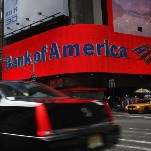Violence Is the Answer in Marvel's Most Brutal Film Yet, Logan
EntertainmentBefore Logan, the third installment of the X-Men offshoot Wolverine film franchise (and supposedly the last time Hugh Jackman will play the titular role), the savagery of Wolverine’s primary weapon—the giant metal claws that are embedded under his skin—was an onscreen afterthought. Sure, he’d plunged those things into a chest or two during the preceding eight movies he’d appeared in, but these were quick, gore-free deaths that were easy enough to not even consider as such in the sanitized presentation that makes murder palatable for family viewing. See, the X-Men movies have been rated PG-13 (that goes for all of the Avengers-threaded Marvel Cinematic Universe, and virtually every contemporary superhero movie, save last year’s Deadpool). While the implied idea that sugarcoating death so that it’s more consumable for the masses seems more based on gut feelings (and how ick factor disrupts them) than actual science, cartoon violence that racks up body counts without making its audience so much as flinch is as American as apple pie and white supremacy.
It is then impossible not to read Logan, which is in part a showcase for the various ways those metal claws can penetrate character’s heads (sideways through the crown, under the jaw through the top, from the back through the cheek), as a reaction to the current state of superhero movies. These are films where violence goes down as easy as the Icee in your arm rest and ultimately very little is at stake because you know another installment in these never-ending franchises is on the way and the film you’re watching is just a pole propping up an overall, slow-moving narrative. Everyone’s paycheck depends on the continued survival of these stories’ heroes. You know everyone who’s supposed to be fine will be.
Logan, thanks partially to a reported pay cut Jackman took, is rated R, and proud of it. Last year, Logan director James Mangold posted what he said was the second page of Logan’s script, which read in part:
-

-

-

-

-

-

-

-

-

-

-

-

-

-

-

-

-

-

-

-

-

-

-

-

-

-

-

-

-

-

-

-

-

-

-

-

-

-

-

-








































